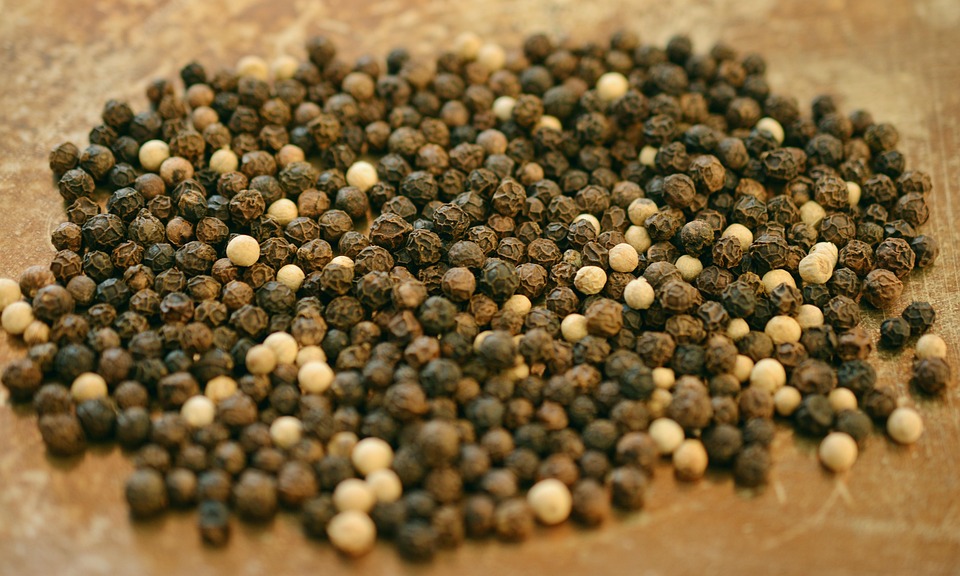Black pepper nerve pain is an unexpected phrase to see on a health page, but it describes a real, puzzling problem: nerve discomfort linked to the compounds in black pepper or to inflammatory responses that mimic nerve pain. You may have noticed a burning or tingling after spicy meals, or you might be exploring natural ways to reduce flare-ups. Understanding this connection matters because it gives you practical options to feel better without surrendering your life to chronic nerve irritation.
This article walks you through seven real, evidence-backed ways to reduce black pepper nerve pain. I’ll give you clear steps, honest warnings, and simple strategies you can use tonight. You won’t get jargon. You’ll get straightforward, proven approaches that respect your body and your time.
Contents
- Black Pepper Nerve Pain: What It Is And Why It Happens
- 1. Use Cold And Contrast Therapy To Calm Sensitive Nerves
- 2. Learn The Gentle Art Of Topical Soothing
- 3. Try Anti-Inflammatory Foods And Supplements
- 4. Use Mindful Movement To Reduce Peripheral Sensitivity
- 5. Control Triggers: Spice Smarter, Not Less
- 6. Consider Medical Treatments For Persistent Symptoms
- 7. Rewire The Nervous System With Desensitization Techniques
- Practical Daily Routine To Reduce Flare-Ups
- When To Seek Immediate Medical Help
- Bottom Line
- FAQ
Black Pepper Nerve Pain: What It Is And Why It Happens
Nerve pain feels personal. It’s sharp, burning, or numb — and it arrives without asking. When black pepper compounds like piperine interact with your sensory nerves, they can trigger TRPV1 receptors, the same channels activated by heat and capsaicin. That’s why pepper can feel like a burn even when no thermal damage occurred.
This response is harmless for most people, but if you have nerve sensitivity, neuropathy, or an inflammatory condition, the effect can be louder and longer. Researchers at medical centers studying TRPV1 channels and piperine show these pathways are real and measurable, and they explain why some people get a disproportionate burning sensation from common spices.
1. Use Cold And Contrast Therapy To Calm Sensitive Nerves
Cold reduces nerve firing. A cool compress slows down the signals that generate burning sensations. Apply a chilled compress for 10–15 minutes; then remove for the same amount of time. Repeat this cycle two or three times, but never sit on ice directly — always wrap it in a cloth.
Contrast therapy — alternately applying warm and cool — can retrain overactive nerves. Remember: if you have diabetes or poor circulation, check with your clinician before using aggressive temperature therapies. Studies of peripheral nerve irritation show temperature modulation changes nerve excitability in ways that can dull pain quickly.
2. Learn The Gentle Art Of Topical Soothing
Topical agents can work wonders when internal medicines feel like overkill. Look for creams that combine mild lidocaine or menthol with anti-inflammatory herbs. Products containing diluted capsaicin require patience — they can initially increase burning before reducing it — but some people report lasting relief after regular use.
If you prefer kitchen solutions, a small dab of aloe vera gel or yogurt can soothe immediately after a pepper-induced flare. Both are mild, reduce surface irritation, and create a cooling barrier. Use hygiene and common sense: if skin breaks or shows signs of infection, stop and seek medical care.
3. Try Anti-Inflammatory Foods And Supplements
You are what you eat — and your nerves respond to that. Anti-inflammatory diets reduce systemic inflammation and can lessen the frequency and intensity of nerve flares. Aim for:
– Omega-3 rich fish like salmon or sardines.
– Colorful vegetables and berries.
– Nuts, olive oil, and whole grains.
Supplements such as alpha-lipoic acid, B-complex vitamins (especially B12), and curcumin have clinical data supporting neurological benefits. A neurologist’s review of nutraceuticals shows measurable improvements in nerve pain scores in some patients. Always discuss supplements with your clinician to avoid interactions with medications you take.
4. Use Mindful Movement To Reduce Peripheral Sensitivity
Movement doesn’t have to be intense to matter. Gentle stretching, yoga, and short walks increase blood flow and help nerves heal. Focused practices that reduce stress — breathing exercises, tai chi, or guided meditation — lower inflammatory markers and change how your brain interprets pain.
Structured physical therapy can be a game-changer. A therapist trained in neuropathic pain will give you graded exercises aimed at desensitization without provoking flares. Patients who commit to consistent, modest activity often report less frequent episodes of black pepper nerve pain and longer pain-free stretches.
5. Control Triggers: Spice Smarter, Not Less
You don’t have to swear off flavor. Smart adjustments can prevent that sudden zing without stealing joy from your plate. Try these practical tricks:
– Cook black pepper with fats (olive oil, dairy) to dilute piperine’s immediate effect.
– Add spices later in cooking to mellow their bite.
– Choose milder pepper varieties or blends with cumin and coriander.
If certain meals reliably trigger nerve flair-ups, track them for two weeks. Patterns reveal themselves fast. When you know your triggers, you can enjoy meals with one eye open and your comfort intact.
6. Consider Medical Treatments For Persistent Symptoms
When lifestyle moves aren’t enough, medical options exist. Short courses of oral anti-inflammatories or neuropathic medications can reduce nerve firing quickly and restore function. For refractory cases, nerve blocks or topical prescription agents can be applied under clinician supervision.
Clinical guidelines from pain specialists emphasize a stepped-care approach: start with conservative measures, then escalate to medication or procedures when necessary. If your symptoms impair daily life, don’t stay stoic — ask for a referral to a pain specialist or neurologist who understands neuropathic mechanisms.
7. Rewire The Nervous System With Desensitization Techniques
Nerves are plastic. They change with the right input. Desensitization involves gradually reintroducing mild stimuli to retrain pain pathways. Therapists use graded touch, vibration, or temperature exposure to reduce hypersensitivity over weeks.
This method is slow, but durable. Imagine retraining a leash — gentle, consistent tugs until the dog walks calmly. The same principle applies to your nerves. Many patients report a steady decrease in both spontaneous and pepper-triggered episodes after a structured desensitization program.
Practical Daily Routine To Reduce Flare-Ups
You deserve a day that doesn’t revolve around pain management. Here’s a simple, repeatable routine that combines the strategies above:
– Morning: Light stretching and a high-omega breakfast. Apply a light topical barrier if you expect touching irritants.
– Midday: Keep hydration and choose anti-inflammatory snacks. Avoid concentrated spices if you have a scheduled meeting or drive.
– Evening: Gentle walk, then a cool compress if you feel any tingle starting. If necessary, apply prescribed topical or take a timed dose of a recommended supplement.
Routines build resilience. Commit to a simple plan for six weeks and you’ll see whether the combination helps you. Small, consistent steps produce real change.
When To Seek Immediate Medical Help
Not all burning is harmless. If you notice sudden weakness, loss of coordination, fever, or rapidly spreading skin changes, seek care right away. These signs suggest infection, severe inflammation, or neurologic compromise that needs urgent evaluation.
If black pepper nerve pain appears for the first time with new numbness or progressive symptoms, book an appointment with your primary care clinician or neurologist. Early assessment prevents missed diagnoses and can shorten the path to relief.
Bottom Line
Black pepper nerve pain can be managed. Start with the simple, effective moves: cool compresses, topical soothing, mindful eating, gentle movement, and targeted anti-inflammatory tactics. If symptoms persist, ask for medical help — there are safe, evidence-based options that can restore comfort without surrendering what you love.
You don’t have to accept flare-ups as the new normal. With steady, compassionate action and the right team, you can lessen the sting and get back to living fully.
Boldly go try one of these tonight. Small changes compound into big relief.
FAQ
Can black pepper actually damage nerves?
No — in most cases black pepper does not cause permanent nerve damage. Its compounds activate receptors that create a burning sensation. If you have a pre-existing nerve disorder, the sensation can be intense, so get evaluated if symptoms persist or worsen.
Are there safe over-the-counter treatments I can try?
Yes. Over-the-counter topical agents like lidocaine patches and menthol creams can ease symptoms. Oral anti-inflammatories may help short-term. Talk with a pharmacist or clinician about interactions and underlying conditions before starting treatments.
How quickly will these methods reduce my symptoms?
Some approaches — cold compress or topical soothe — can provide relief in minutes to hours. Dietary or desensitization strategies take weeks to show consistent improvement. Be patient and track what works for you.
Should I avoid black pepper completely?
Not necessarily. Many people can enjoy pepper with small adjustments: cook with fats, use smaller amounts, or choose milder varieties. If pepper consistently triggers severe nerve reactions, reduce intake and consult a clinician about testing for underlying sensitivities.
A visual line and a paragraph to close the article: You’ve read the options, and you’ve got a plan. Take one small step today — a cool compress, a different spice, a five-minute stretch — and watch how your body responds. Relief often begins with a simple choice.
References
The National Institutes of Health published information on TRPV1 receptors and sensory nerve activation (http://www.nih.gov/news-events/trpv1-receptors-and-nerve-activation).
The Mayo Clinic offers guidance on neuropathic pain treatments and when to seek specialist care (http://www.mayoclinic.org/diseases-conditions/neuropathic-pain/).
Harvard Health has patient-friendly advice on anti-inflammatory diets and supplements for nerve health (http://www.health.harvard.edu/pain/anti-inflammatory-diet-and-nerve-health).
Johns Hopkins Medicine provides practical recommendations for topical therapies and desensitization techniques for peripheral nerve pain (http://www.hopkinsmedicine.org/health/conditions-and-diseases/peripheral-nerve-pain).
The National Library of Medicine hosts peer-reviewed research on piperine, capsaicin, and TRPV1 interactions (http://www.ncbi.nlm.nih.gov/pmc/articles/PMC-related-study).








